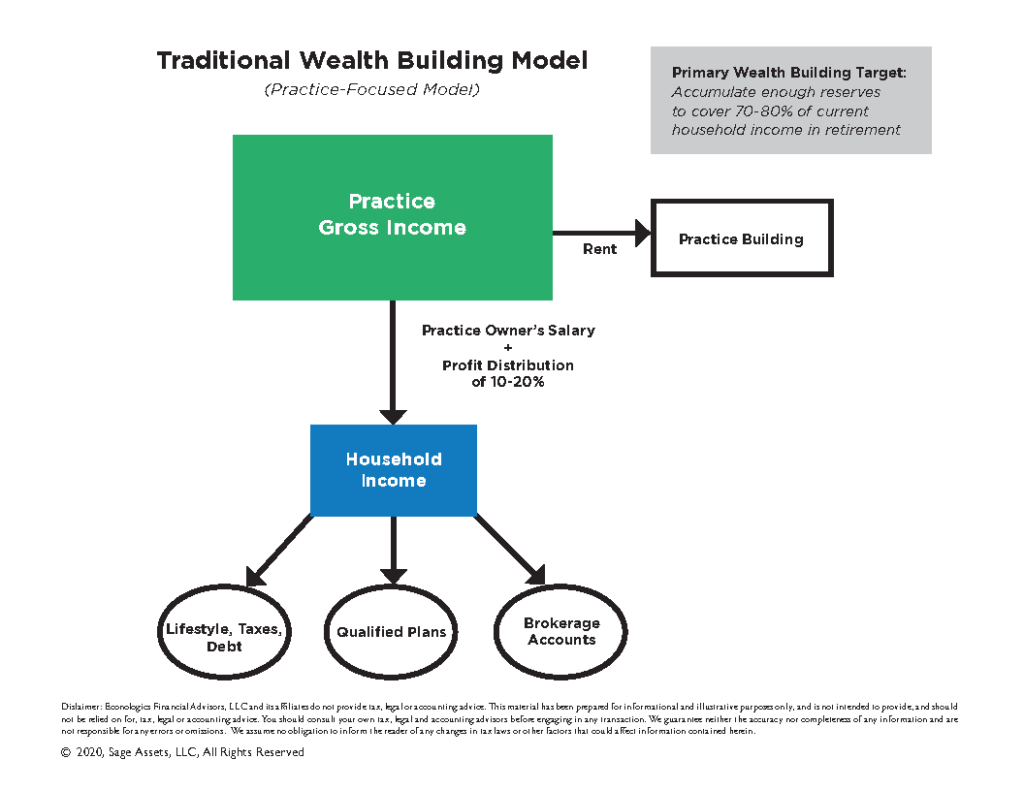
How do you create successful partnerships for your business? Nathan Shields presents Eric Miller, the owner and Chief Advisor of Econologics Financial Advisors. Eric talks with Nathan about specific steps you need to take to put you in the best position to succeed in your partnerships – from aligned purpose and goals to gifting hard equity. Join in the conversation to discover critical steps that need to be taken to ensure you meet both parties’ goals and sidestep the potential pitfalls. You wouldn’t want to miss this episode!
—
Listen to the podcast here:
How To Create Successful Partnerships With Eric Miller Of Econologics
I’ve got Eric Miller on with us, my favorite financial planner from Econologics. Eric, thanks for joining me again.
It’s my pleasure. Let’s do it.
We’ve talked a number of times here over the past. One of the topics that came up that I wanted to pick your brain on was about partnerships. A lot of owners might go into ownership independently or individually. Some of them might have a partner that they are considering opening up their first clinic with. Nonetheless, it’s an invaluable thing to consider all the steps that are made for a successful partnership. This is a marriage. It might be as difficult as a marriage. It could cause as much stress because you’re spending as much time with this person as you do with your spouse.
It’s probably more. The work is 7/10 of your life when you think about it. When you have a partner in your business, it’s probably more so than your actual spouse because of the amount of time that you spend doing work.
You don’t want to take it lightly and there are a number of things to consider. I’m glad we’re having this episode because we’re going to break down a lot of the things, if not all the things, you need to consider about a partnership. How to formulate one? What should it look like? What should someone consider when they say, “I want to partner with somebody. What do I do?” How would you first address that question?
There has to be an alignment between you and this other person. When I say alignment, it’s like a marriage. It doesn’t work if it’s built on the wrong reasons why you’re getting married. If it’s just for looks, that’s not always going to be a good thing. It’s the same thing with a business partnership. You have to look at it from, “Do we have similar purposes? Do they have a purpose to whatever the purpose of the organization is or whatever the purpose that I have for the organization? Are we on similar purpose lines here?”
You can imagine if one person is like, “I want to go this way and you want to go that way,” it’s eventually not going to work. It needs to start with, “What are the purposes? What are the goals of the organization?” They have to be in alignment. I can tell you this from working with practice owners for many years. I have seen good, bad and awful partnerships.
There’s one where they were not talking to each other but only through their attorneys. That’s bad. Just like a marriage doesn’t crumble overnight, a partnership has to be something that you’re constantly creating. To that degree, you need to have some fundamentals when you start off with it. The goals of the partners have to be very similar like, “We want to get to seven practices and do $7 million in revenue a year. We want to eventually transition out and sell to a corporate group.”
Whatever it would be, it has got to be pretty similar. You can imagine if one person is like, “I want to get to seven practices and $7 million,” and the other person is like, “I’m good for two and coast along.” That’s not going to work. You have to build that alignment in the front end. There has to be some alignment on finances too because money is a big component part to partnerships. There has to be some synergy there as far as, philosophically speaking, similar viewpoints on the subject of money. That one person is like, “I need all this money right now.” The other person is like, “We have set aside. We have to do this and this. We can’t just rip all this money out of the business.”

As you bring that up, I’m thinking most marriages fall apart because of financial issues and financial strains. Wouldn’t you say that could be the same issue with most partnerships falling apart in how to appropriately spend money?
It usually falls apart because one person thinks that the other person is not pulling their weight. There’s a lack of exchange there. It has to be very much written out as far as who is doing what in the organization. When you’re looking at a partner, you want someone that can complement what your strengths are. Let’s say that you’re a good technician and you’re very good at practitioner work, but you’re not a good executive. Maybe you want to bring on a partner that has those skills. It’s building that but there has to be that alignment to start with.
Of all those practice owners that you’ve talked to that are in partnerships, what would you say is the percentage of those that have been successful versus those who have not? I would think it would be a large percentage of those that have not.
It always starts off good. They’re happy. Like a marriage, one thing that ends up happening is you try to put the partnership on cruise control. You stop creating, communicating, spending time with each other, and doing all these things. All of a sudden it’s like, “Maybe I don’t like that person as much as I did. Why do I need you?” You have to make sure that you guys stay in communication.
I have a partner. We talk every day but we have a dedicated hour every single week where we go over the basics to stay in communication of what the direction of the organization is. What are our goals? What are the purposes? What are our targets? That way, we’re all moving towards a common objective. It doesn’t mean that there isn’t friction or you’re not going to have upsets and any of these things.
You have to have someone that has an owner mentality that can take responsibility and isn’t just doing it for a paycheck. I can give you stories of that happening where you have one owner that wants to expand and the other owner is like, “I just want to come here from 9:00 to 5:00. When it’s 5:00, I want to check out and that’s it. Give me my percentage of the profits.” That’s not going to work.
I loved how you brought it back to value alignment and goal alignment. What worked out with Will and me is that not only did we have similar goals, we wanted to prudently expand and whatnot, but we also had shared similar personal values. A lot of it ties back to we are like the same kids within our family and our fathers were very much alike. We didn’t learn this until later on. I don’t necessarily think that partners have to go this far but personally, we shared similar value sets. It’s because of that and the constant communication that we shared that we enjoyed being around each other. Can you imagine being a partner with someone who you don’t enjoy being around with? That would probably be a recipe for failure.
It’s going to fail at some point in time. If you’re enduring right now like if you’ve ever seen those relationships with people who are together just because they can’t imagine being apart from each other is too painful, but they’re just enduring. You don’t want to do that. Any relationship can be fixed. I would recommend to people that if you haven’t sat down with your partner in a while, make sure you do that. Get in good communication with them and find out what’s going on like, “What is the direction that you’re going? Why don’t we map something out?” It doesn’t take much to imbue some life into a relationship.
Once you begin that communication cycle, you can start fixing a lot of things, but it doesn’t start until the communication begins.
A partnership has to be something you constantly create. Click To TweetYou’ve got to be able to take responsibility. If there is some friction and upset, don’t just sit there and be right. You have to take the other person’s point of view. That’s the only way that any conflict is going to get resolved. We’re getting into conflict management right now, which is a totally different episode. We can do that as well. To your point on that alignment, it starts with common goals and purposes. You got to have some affinity for one another and share some genuine likeness. That’s important.
What if it’s like I’m an owner. I’m not necessarily interested in giving up 49% or 50% of the business, but I’ve got a clinic director that has been with me for five years. He or she is amazing. I want to reward and incentivize them. Maybe I want to open up another clinic and they have some form of partnership at that point. What are the things to consider at that point?
You have to come up with some transition plan for yourself and decide, “How am I going to transition out of this business?” There are different methods that you can do. There are seven different ways you can exit out of a business. One of them is doing either what’s called a buy-in or buyout. I can go over the specifics of that.
A buy-in would simply be where I have 1 or 2 associates or clinical directors that would like to start buying into my practice. They’re going to buy-in based upon the value of the business. That is one method where a lot of people have been able to take some risks out of the business for themselves and also liquidate a portion of their business and get some cash if they need that by allowing someone to buy-in.
That is a method to be able to bring on someone. Let’s say I have a practice that’s worth $2 million. I want to have someone buy-in 25% of my business. They would have to come up with $500,000 to be able to do that. Most associates are not going to have $500,000 sitting in their piggy bank to be able to do that. You have to be willing to seller finance at that point.
The benefit to you is that you’re going to get the same amount of cash that you’ve been getting even before because the profits are going to be paid back to you, except you’re going to be getting it at capital gains tax rates because it’s going to be coming back to you at a lower tax rate than what you’re getting. That would be one method of identifying someone and then saying, “I’m going to let you buy into this business for a predetermined valuation.”
That’s giving someone some hard equity. You’re talking about hard equity options. What if it’s not a hard equity option and someone is like, “Maybe I don’t want to go that far and give them a percentage of the company.” I hear many therapists talk about how they’re partners in their company. When I talked to them, they’re just getting profit-sharing. There is a way to be a “partner” without necessarily giving up hard equity of the business.
You can designate money like executive bonus plans or something like that, which the owner is saying, “Based upon our profit of the business, I’m going to share the profits with you with selected people in the organization.” Usually, it’s a management team. It’s like, “If we’re profitable, I’m going to give you 1% or 2% of the profits and this is the arrangement that we would make.”
That way, if you’re an owner, you don’t want to give up any of your equity, but you want to reward and tie executives in so that they’re motivated based on the profit of the organization. You can structure it that way and there are 1,000 different ways to do that. It has got to be on a percentage of the actual profit of the organization, not the revenue. That’s certainly a method that you could do as well.

That’s the thing that Will and I came up against as we were trying to figure out how we can incentivize and reward some of the clinic directors or management team members that we had. We went to a lawyer. We said, “We want to do some partnerships and maybe some profit-sharing.” They were like, “How do you want to set it up?” We were like, “We were hoping for some guidance.” The lawyer said, “You can do it in a thousand different ways. What do you guys want to do?”
I’m glad that we’re talking a little bit about considering the difference between hard equity and some kind of profit-sharing model because there are a thousand different ways to do it. When it comes down to what you want to put in writing, the calculation has got to be the same so everyone knows exactly how it’s figured out.
I’ve seen some people do that with some success as well. Anytime you are trying to reward people that are producing for you, it’s important that you incentivize them in some way. Trying to get people tied into the actual business though, there’s a risk to that but at the end of the day, it’s probably going to be a little bit more successful.
I know you recommend getting a business attorney. Find a business attorney if you wanted to do this to write it up and spend the money that it takes, especially a business and acquisitions attorney that specializes in this.
You would 100% want to work with a company that specializes in how to bring it on physical therapy, someone that has done it and understands the agreements that they’re going to need to be in place. When you bring on a partner, now you’re going to have a business entity that you guys are going to share. There have to be operating agreements, management agreements, and all these agreements that need to now be redone to include this new partner. You need to amend all the stuff.

You need to make sure that you have an attorney that has specialized in mergers and acquisitions in your industry. There are companies out there that specialize in that thing. They would perform the valuation. Most likely, they would determine what the value of the business would be. They’re going to create all the legal documents to be able to do that.
They’ll run the numbers as far as, “This is what the profit would be entitled to for the new owner and all of those guys.” They’ll help run all of those things. It’s going to cost you $5,000 or $10,000 to do something like that. A handshake is still good like, “I’ll do this.” You have to make sure you keep the actual agreements in place for sure.
What a lawyer is also going to help you figure out are some kinds of clauses. The relationship between Will and me when we finally got an attorney was such that we had an agreement as to how things would end or when conflicts arose, this is how we would address conflicts. It’s called a shotgun clause. If you’re going to try to buy me out at a smaller amount than it’s valued, then I had the ability to turn around and buy you out for that same amount.
It also had conflict resolution built into it because we were 50/50 partners, which meant we had equal say. Our lawyer broke it down like, “If you guys are stuck on an important issue, who is going to be the tiebreaker?” We had to designate an agreed-upon person that we both trusted to be the tiebreaker. If we wanted to go to another level, we wrote out to someone else as well. It helped us with breaking down so we knew well ahead of time, if we ever had issues, this is how it was going to go down.
Reward people who are producing for you. Click To TweetHow many times did you guys have to do that?
Never, but I remember exactly what would happen if we needed it.
The thing is when you put something in place like that, it almost lessens the likelihood of that uncomfortable occurrence will ever happen. When you take responsibility for doing something like that, you lessen the likelihood that something bad is going to happen to you or you’re going to have an unfortunate situation occur. If people don’t take care of themselves, what’s the likelihood that you’re going to have health problems? It’s probably pretty high. It’s not rocket science. It’s just observable.
To your point, these are what these agreements are there for. What happens if I die prematurely? What happens when somebody becomes disabled? What happens if someone goes off the deep end? How was it written out? That’s all written out in the members’ agreement and operating agreement. All those things are written out. If you’re bringing on a partner, you got to make sure that that gets amended, updated and reviewed, both people agree upon it and it’s executed.
More often than not, a lot of the issues that I see arising, there could be a lack of communication and one person is not feeling like the other one is pulling their weight. A lot of times, it’s simply one person who wasn’t in a happy marriage or at the beginning of the partnership is no longer in that happy marriage. Because of the relationship to the partnership, that causes things to get unraveled. Whether it’s marriage, drug abuse or alcohol abuse, all those things can affect negatively on the business. Addressing those with a legal document ahead of time makes it so much easier to unwind when necessary.
There will be personal behavior clauses in there as well. If someone is not fulfilling their end of the bargain, then the other person has the right to buy that other person out. All those things are part and parcel of that. It’s key that you have those things. Make sure that you have an attorney. Don’t just grab something off from LegalZoom.com and do it. Make sure you have a mergers and acquisition attorney that does that for you.

You can have someone to buy-in. We talked about partnerships, to begin with, if we have a clinic director or someone who we appreciate in the organization and we want to do some profit-sharing with. Talk to us a little bit about the buyout stuff that you brought up.
We’ll talk about two things. We’ll talk about the buyout and then granting people ownership that you feel deserve it, that they have sweat equity.
Some people might not want to say, “I want you to buy out.” They might say, “I’ve been with you for fifteen years and now you’re asking me to buy into something that I’ve helped you build from the ground up.” In those situations, you might want to gift some kind of stock.

There may be instances where the value to you as the owner is I have a person here that has been with me for 10 or 5 years. They’ve helped me build this thing. I want to reward them. I want to be with them for the period of time that I own this business. I don’t want to make them have to come up with the money because I feel like they’ve earned it already for the value of the business.
What do you do in those instances? There are a couple of things you can do. You can gift them because everyone has the ability to gift money or assets to somebody over their lifetime. You can gift them a percentage of the value of the company, “I want to gift them 15% or 10%,” whatever that would be. You would need to get all the same agreements in place. You would need to make sure that there are member agreements and operating agreements because now they’re going to be a partner with you. As far as gifting them the shares, you can do that. The negative thing is that it would take away from your lifetime gift exemption that you have, whatever that amount would be, but there would be no negative tax consequence to them. That would be a hell of a thing to do. I’ve seen some owners do that.
Would the merger and acquisition lawyer help you with something like this or is this a CPA type thing?
It’s going to be both. A CPA is also going to be needed. There need to be agreements that are created and a legal document that says, “I’m gifting this percentage of the business, which is valued at this to this person.” I’m sure there’s a lot more to it, but that’s essentially what you would do.
It’s important to figure out how that’s going to affect you and them. It’s a very nice thing to do that they’re not going to get taxed on this gift that you’re providing them, but it also decreases the amount of gifting that you can do to other employees or even to your children, grandchildren or wife in the future.
That’s the downside to it. If you don’t want to do that and you still want to be able to give them a percentage of the company, then you would do what’s called a grant. It’s a little different and nuanced. This is how I got part ownership of our company in the beginning. I got a grant of stock. What that means is I got, let’s say, 25% of the company granted to me. I did have to pay tax on the value of whatever that grant was. That’s fine because I got the value of it. I just have to pay the tax on it. It was a big tax bill but that’s what the person would be on the hook for.
They would be entitled to that percentage of the profits. Maybe in the first year, the profits that you get could go to Uncle Sam. After that, you’re getting a percentage of the profits and you don’t have to pay for the value of the business. I’ve seen that done probably at least a dozen times for people that want to reward someone that has been with them for a long time or want to keep someone tied into them and give them the sweat equity. It’s a fabulous tool.
Hopefully, the person who was granted that stock recognizes that they are going to have to pay taxes on it. You want to be upfront about that, but they recognize that it’s still a gift. It shouldn’t be an upset for them to consider that they have to pay taxes on something that came to them for free.
If someone has a bad reaction to that, that’s a bad indicator right there. You may want to rethink that. That would be a very simple way to give that sweat equity to someone that has been with you for a long time and tie in a top performer that you think can maybe take over the ownership or help the practice grow even more. Granting of stock is a cool tool.
You can't build a business on chaos; you have to have something in order. Click To TweetThat’s not a way to buy out because then the owner doesn’t walk away with anything. It would be more of the buy-in. Have you ever seen a situation where the employees buy out the owner and then take ownership of the company? Have you worked in that scenario?
There’s something called an Employee Stock Ownership Plan. It’s called an ESOP, which is a method where an owner can get to take shares and have the actual employees buy-in. It’s almost like a profit-sharing plan, and buy-out the owner that way. It’s super expensive to set something like that. You need to have at least $1 million EBITDA to be able to do something like that. A lot of practice owners have that EBITDA.
It would be as easy to have an associate to maybe buy you out and that would be an easier method. You still may have to carry a note in that scenario where you do a buy-out. Let’s say you have 1 to 2 associates that want to buy you out completely. They say, “We’re going to buy you 100% out. The agreed value is $3 million. We’re going to pay you $300,000 a year for the next ten years at a 6% interest rate.” You can do that. That’s a buyout method. You just got to make sure they know what the hell they’re doing.
If you’re looking at maybe granting some kind of hard equity, then you’re looking at a buy-in option granting or gifting. If you’re not looking at granting this person actual stock in the company, then you’re talking about profit-sharing models that could be rather diverse. There are many ways to cut that pie. All in all, we’re also saying to start with the basics. Let’s go back to building the foundation. Make sure the values and alignment are there, the goals are agreed upon, and everyone is in good communication. Start with a mergers and acquisitions attorney and go from there.
It seems like a lot. If you start there, all the methods, techniques and technical stuff can be figured out. The methods are an important thing. Having someone that has done it before or has some experience with it can give you the pros and cons of each of these different methods. Spend some time on it. Don’t make a rushed decision. Think about it, look at it and make sure that it’s beneficial for you. When you do sell a portion of your business, you are giving up that percentage of profits to your household. Make sure that you understand, are you financially ready to be able to do that? Are you doing this to expand or buy you more time for yourself? What’s the reason?” Think about the reason that you want to bring out a partner from that respect.
The clinic owners that have done the best from my personal experience are those that have successfully navigated this. Either with profit-sharing or getting some hard equity buy-in, they have somehow been able to bring on partners and expand their practices without them having to do it all. There’s something to having partners in each of those locations that incentivize that person that’s on-site to build it and make it successful. Those are the people that have been most successful in the physical therapy owner space that I’ve seen.
You’re right, which is another model too. If you’re looking at different locations, partner with someone at that location. Maybe you own 51%. They own 49% in some models. Maybe that’s another way that you can expand as well to give ownership of that particular practice.
Some of the larger privately-owned clinics that I know do exactly that. That person on-site might have 49% or less of the business, but they get a relatively average salary on top of maybe monthly or quarterly distributions. Their job is to run that clinic.
You run the practice. The parent company is going to do a lot of the marketing, collections, billing, HR and all of that. It’s a good model if you want that owner to focus on the management of the business, production, patients and those kinds of things. It can work.

If people have more questions for you about partnerships, how would they get in touch with you?
Go to Econologics.com and you can download a ton of information that we have. Transitioning is something you have to think about all the time like the transition of your business. The moment that you start your business, you should be thinking about your transition. There are different time frames. We’re going to create a checklist that’s like, “If you’re going to exit out in one year, these are the things you should be looking at. Three years, this is what you should be looking at. Five years, these are all the things you should be looking at.” That way, you know you’re on the right track to get an exit that is going to create maximum value for you and your household, which is what everyone is shooting for.
Hopefully, people take advantage of that because I’m pretty certain that most owners are thinking, “I want to exit out in 3 to 5 years.” They assume it’s going to happen and don’t need to know that they need to prepare for it. That’s why you’re making a checklist.
From experience, it’s not good to have no plan and you want to transition out in 90 days. That’s bad. You’re not likely to get the value that you want for the business. There are a lot of people though that end up saying, “I’m done with it. I want to get out.” They ended up selling for some discount of what they possibly could make. It’s not anywhere near what the practice could be worth. That’s sad. I hate to see that but it happens more often than not.
Most of the time, it’s putting some organizations. Put your policy procedures together and that can dramatically increase the value.
I don’t think people realize how much that can increase the value of your business because it is the point of expansion right there. You can’t build a business on chaos. You have to have something. It doesn’t take much time. There are thousands of resources and materials out there. I can’t express the return on investment with hiring a good consultant because I’ve seen it. I’ve seen people that have hired consultants and your profit margins increased by 2%, 3%, 4%, 5%. It’s the value of your business because it’s based upon a multiple of the profit that increases it by hundreds of thousands, if not millions of dollars.
That’s a good plug for me. I appreciate that.
I did that on purpose.
Thanks for your time. I appreciate it.
It’s good to see you.
Important Links:
About Eric Miller
 Eric Miller has been in the financial planning industry for over 20 years. He’s a co-owner of Econologics Financial Advisors – awarded an Inc. 5000 honoree for 2019. As the Chief Financial Advisor for the firm, Eric has had the good fortune to have over 10,000 financial conversations with private practice owners in various healthcare industries and helped guide them into a more optimum financial condition using a proven system.
Eric Miller has been in the financial planning industry for over 20 years. He’s a co-owner of Econologics Financial Advisors – awarded an Inc. 5000 honoree for 2019. As the Chief Financial Advisor for the firm, Eric has had the good fortune to have over 10,000 financial conversations with private practice owners in various healthcare industries and helped guide them into a more optimum financial condition using a proven system.
Love the show? Subscribe, rate, review, and share!
